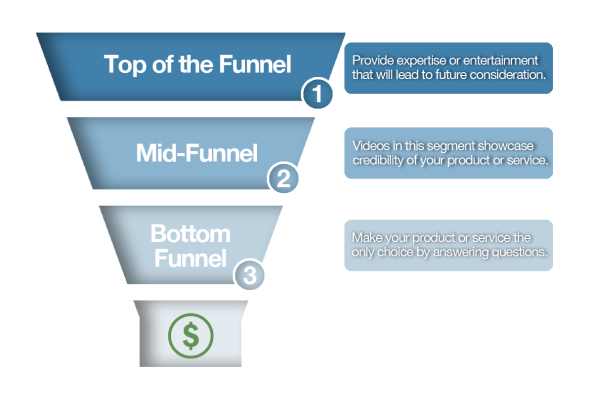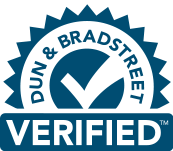Video is one of the strongest tools you can incorporate into your marketing strategy.
It not only engages potential customers, but it also educates those customers about your product or service. If done well, some videos can even sell for you. Creating content that leads to sales is the goal of many marketing strategists. They think, if I can create an effective explainer, my job is done right?
Wrong! Many marketers make this big mistake!
If you are only creating a product overview or an explainer video, you’re missing out on a lot of opportunity.
Imagine this! You are looking for a new job and decide to apply for an open position using only a paper resume. While submitting a resume has historically been the best approach, new tools and tactics are often needed to help you land a job interview. You can submit an application online, connect with the hiring manager on LinkedIn, or even reach out to a recruiter via email to express your interest. Pairing the traditional resume submission with some of the newer outreach methods is a more effective strategy to help you get hired.
Similarly to the job search example, marketers are limiting themselves if they don’t make content for all stages of the sales funnel. Some customers respond well to product overview and explainer videos. Others won’t engage with your content unless they are first introduced to your company in a way that’s not overbearing.
One type of content is no longer effective for maximizing potential. Successful video marketing strategies incorporate unique video at all stages of the sales funnel to attract as many customers as possible.
Creating video that can be used at different stages of the sales funnel is something more companies will have to focus on to compete effectively. According to a recent survey, 96% of B2B companies plan to use video in their content marketing in 2016. There’s a lot of competition for viewers creating an increased need for strong, targeted content.
When developing your video marketing strategy, you must plan to create videos for all stages of the sales funnel. Your first set of videos must target customers who are at the top of the sales funnel. Those customers can be defined as those who are searching for a solution or product that can meet a need. The second set of videos will target potential customers at the mid-funnel stage, or those who are seeking information about your product or service. Finally, a set of videos must be created targeting customers who are at the bottom of the sales funnel and almost ready to convert.
Top of the Funnel Videos – Catch Their Attention
Before someone buys your product, they must first become interested in your product. Videos that are targeted at potential customers at the top of the sales funnel are not pitches or product promotions. The goal of video at this stage is to provide viewers with expertise or entertainment that will lead them to consider your company in the future.
Here’s an example of how this tactic works in the real world.
Think about the last time you were shopping at the mall. When a vendor approached you trying to sell a product, what was your reaction? Often times, you’ll walk away.
What if the vendor created an interesting demonstration at their booth that drew a crowd. Would you be more inclined to approach them?
A direct sales pitch targeted at prospects who don’t know much about your product offerings or company can be overwhelming and abrasive. That’s why it’s important to create videos that offer potential customers a friendly introduction to your company. These videos will be used to “warm” clients in the early phase of their sales journey.
Some examples of top of the funnel videos include:
- How-To Videos – These videos demonstrate something that’s useful to your potential customers.
- Thought Leadership Video Series – These videos feature a leader in your company that can share expert advice on topic that peaks customer interest.
- Educational Video Series – These videos teach a potential customer about a topic they believe is important.
- “Get To Know You” Videos – These videos feature something unique or exciting about your company that helps prospects relate to your employees or brand.
- Content Marketing Videos – All of the above videos are examples of this. These videos can accompany a blog post, a company announcement or used in an educational section of your website. Providing relevant information to your target audience.
It’s important to note that all of the video examples listed are not focused on selling a product, but rather engaging your audience. According to the author of Create Video Marketing for the Entire Sales Funnel, the most effective way to move your video viewers to the next stage of the sales funnel is to push for future interaction. For example, you can use call-to-action links in your videos that will guide your prospect to your next video or content piece.
Mid-Funnel Videos – Make Your Case
Now that you’ve peaked a potential customer’s interest, it’s time to showcase what your company can do. “Mid-Funnel Videos” are the style of video that marketing strategists tend to put the most emphasis on. Videos in this category showcase the credibility of your product or service.
Some examples of mid-funnel videos include:
- Product Demos – These videos demonstrate how your product/service works, why it’s different from others, and how it can solve a need or problem of the potential customer.
- Client Testimonials – These videos highlight how your product/service has changed the lives of your former customers for the better. It’s important to make these videos moving and relatable.
- Video Case Studies – These videos showcase how your product/service is helping businesses succeed.
While “Mid-Funnel Videos” are most common, it is important that you continue to create effective content in this category while also expanding your video presence in the other funnel stages. Keep in mind, videos produced for this stage present a great opportunity. Try using email gating to capture contact information since prospects in this phase have already indicated an interest in your product or service.
Bottom of the Funnel Videos – Push to sale
You’ve had success capturing a potential customer’s attention and convincing him/her to consider your product. Now it’s time to make the sale. Videos targeted at customers who are at the bottom of the sales funnel should focus on making your product or service the clear choice. This can be achieved by answering any lingering questions and showing your customers what’s next.
Some examples of warming videos include:
- FAQ Videos – These videos address any questions a potential client has that could be stopping them from converting.
- Client Services/Onboarding videos –These videos demonstrate your company’s ability to do business with the prospect. For example, a cloud software product will show an overview of getting the customer setup, introduce and show training and technical support.
- Personalized Follow-up – These videos demonstrate your interest in providing value to the customer’s life. Through personalization, you will be able to capture the attention of the customer who is on the fence. These videos also showcase the attentive service and care that will be offered by your company in the future.
“Bottom of the Funnel” videos will serve as your method for driving home your sales pitch. They are meant to further explain why your product or service is the right choice. Don’t forget to use call to actions that prompt users to schedule a demo or call with a representative.
Video has moved away from a “one size fits all” approach. Today’s marketers need to create a library of videos that guide prospects through their self-directed buying journey at their own pace.
Author:








